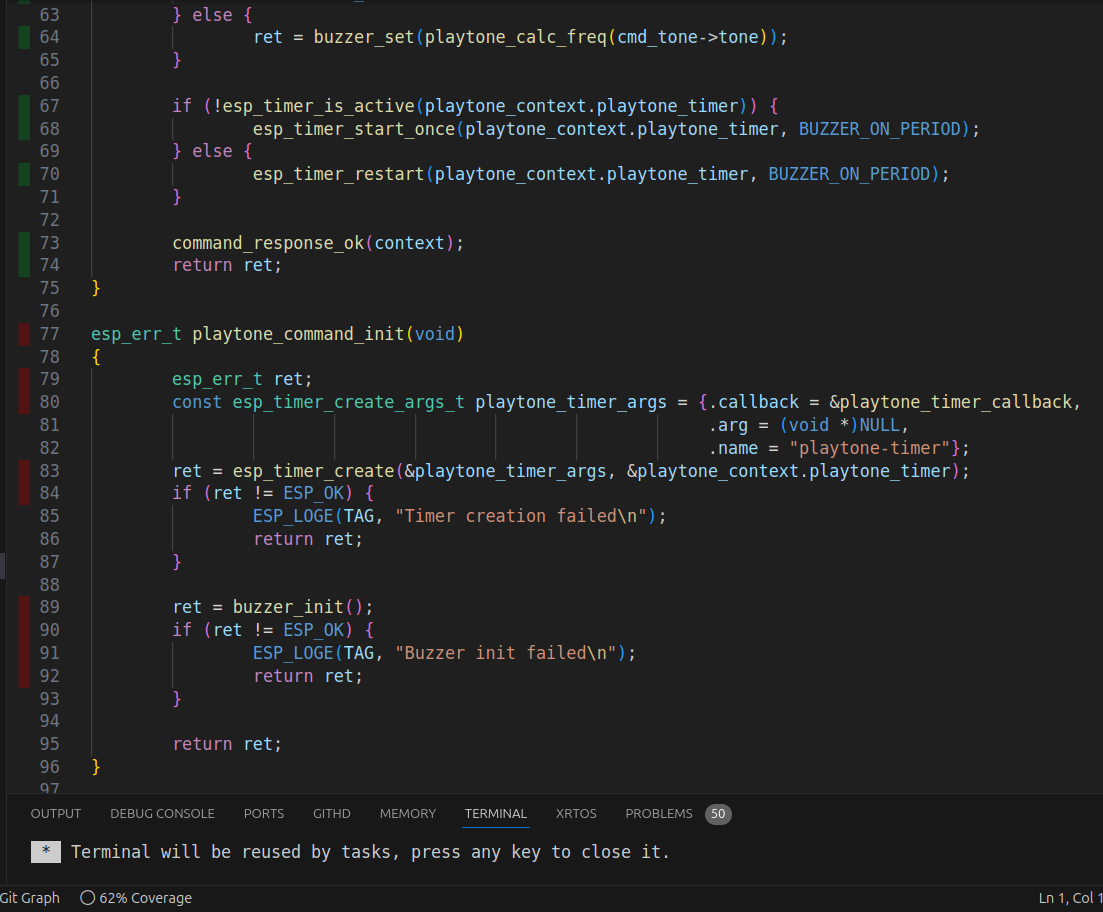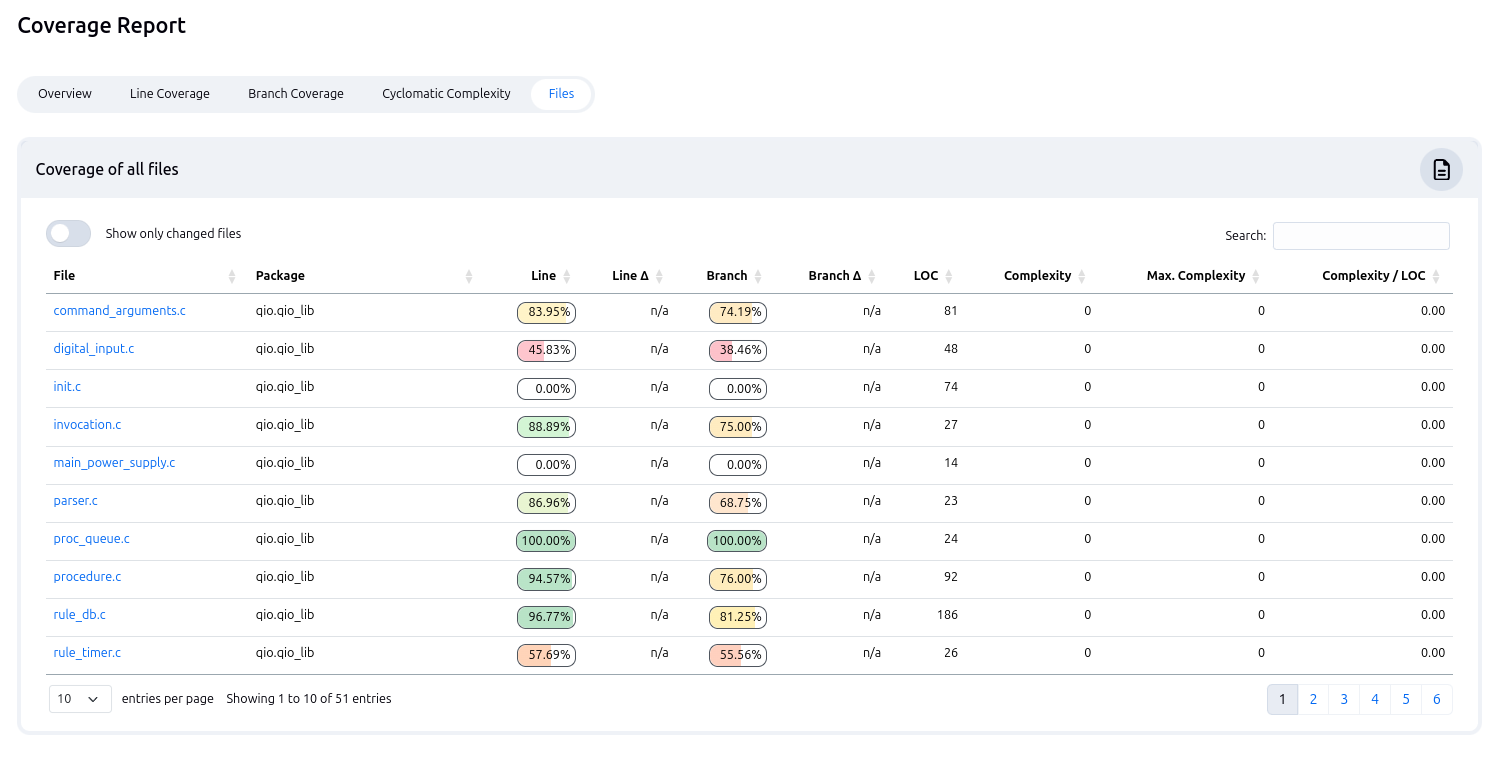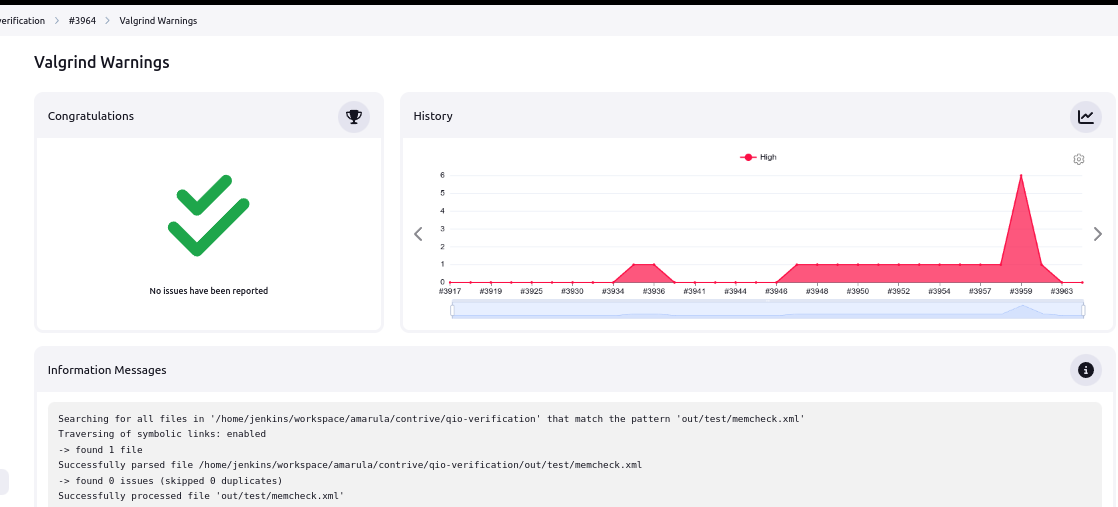Firmware for a Remote Controller Based on ESP32
Contact UsAbout This
This project consists in creating a firmware for a custom device based on an ESP32-S3 module. The designed device functions as a remote controller for the main industrial control system, communicating through digital I/Os and an infrared UART connection.
The firmware is built on the ESP-IDF framework, leveraging FreeRTOS as the operating system to provide a stable and scalable environment for device functionality.
One of the core components of the project is a sophisticated state machine, managing rules, commands, and system interactions. Thanks to this approach, the device is capable of:
Receiving and processing commands through various interfaces, such as web server, USB, MQTT, and UART.
Managing Wi-Fi connections for remote controls and updates.
Integrating Bluetooth Low Energy (BLE) for automatic detection of registered devices and activation of specific rules.
This project includes a web server, enabling system monitoring and configuration through an intuitive interface accessible from any browser.
Key endpoints include:
Secure login for protected access.
Monitoring the device’s inputs and outputs.
Sending customized commands.
Viewing Wi-Fi, BLE, MQTT, UARTS configurations.
Accessing status and configuration information of the industrial system.
This web interface makes the device user-friendly, reducing setup and management time for end users.
Commands
Every command has its own syntax
Basic Commands
Output command
Analog output command: PWM
I/O gpio command: Control GPIO
Send to COM port command: Communicate with the UART.
HTTP request command: Send HTTP requests, supporting both GET and POST methods.
Publish MQTT message command
List BLE command
Delete from BLE List command
Configuration Commands
Configuration commands are used to set parameters of the device’s features (Wi-Fi, BLE, MQTT, etc.), and are permanently stored in the NVS. For instance: - Wi-Fi access point configuration. - BLE settings. - MQTT settings. - UARTs settings. - Web server password and hostname configuration.
Command response
Responses are sent using a command_response function, that sends the response based on where it is needed.
Web Server
The WebServer allows the presentation of predefined or customized content via a browser. It starts when: - Wi-Fi connectivity is activated.
Main Endpoints
Login (POST): Authenticates users attempting to access the server.
Input/Outputs (GET): Retrieves the current status of the onboard inputs and outputs.
Send Commands (POST): Sends commands directly to the device.
Wi-Fi Settings (GET): Returns the current Wi-Fi configuration.
BLE Settings (GET): Returns BLE configuration and registered devices.
MQTT Settings (GET): Retrieves MQTT client settings.
Device Controller Status (GET): Extended status information from the infrared port.
Device Controller Configuration (GET): Returns the device configuration.
Project Structure
The code is split into several libraries:
Util: Contains shared utility functions.
HAL: Hardware-dependent code.
Lib: Hardware-independent code utilizing HAL interfaces.
State Machine and Event Handler
The project is based on a state machine organized through a global context static struct (sm_context), which includes: - Event loop: Managed by ESP-IDF. - Procedure queue: Contains parsed procedures. - Actual state: Updated during execution.
Parser
Commands are parsed using flex (lexical analysis) and bison (syntactical analysis).
All commands have the prefix AT# followed by the command type.
There can be a number of CONFIG_PROC_MAX_CMDS commands that can be parsed from a single string.
Commands can have a maximum of MAX_ARGS arguments.
Each command is parsed and stored into a struct.
The struct contains the number of arguments of the command and an array of arguments of the command.
Furthermore, the parsing of the argument is done leveraging argument descriptors:
ARGUMENT_DESCRIPTOR_STRING
ARGUMENT_DESCRIPTOR_STRING_OPTIONAL
ARGUMENT_DESCRIPTOR_ENUM
ARGUMENT_DESCRIPTOR_ENUM_OPTIONAL
ARGUMENT_DESCRIPTOR_INT
ARGUMENT_DESCRIPTOR_INT_OPTIONAL
ARGUMENT_DESCRIPTOR_IP
ARGUMENT_DESCRIPTOR_IP_OPTIONAL
Procedure Queue
Commands are executed sequentially in a FIFO queue. Until the first command finishes, the next ones are queued. The procedure queue has a limited number of procedures it can schedule.
MQTT
The protocol used is the MQTT5 one. The device is able to connect to a broker through a command and publish on topics. In this way the device can exchange real-time data with centralized management systems.
Bluetooth
The configuration of the bluetooth is done using the esp-idf library that will start a ble thread. In this project we chose to use the NimBLE stack.
Through the BLE command we can switch-on the bluetooth of the device and filter the result selecting a minimum required signal that means that we can set the further signal in which searching for the ble devices in the LBLE list.
Quality Assurance
To ensure firmware reliability, were employed:
Unit Testing using the Unity library
Use of mocks to simulate hardware during tests (the ones provided by espressif).
Valgrind to identify memory leaks.
Code Coverage monitored with tools like LCOV, enabling us to achieve high coverage for core functionalities.
Use of Gerrit and Jenkins pipelines.
Unit Testing
Tests are implemented using the Unity library and ESP-IDF mocks. CMock is used for hardware-specific mock generation.
Code Coverage
lcov is used for monitoring code coverage and integrates with VSCode during local development.
In visual studio the coverage gutters plug-in is used:

This shows at the bottom that 62% of the playtone file (buzzer) is tested. In green the covered parts, in red not covered.

This show the jenkins code coverage in CI using coverage plugin
Memory Leak Detection
Valgrind is used to detect memory leaks.
valgrind --leak-check=full --xml=yes --xml-file="$(PROJECT_TEST_BUILD_DIR)/memcheck.xml"
"$(PROJECT_TEST_BUILD_DIR)/test_***_host.elf"
Valgrind checks on the terminal (summary):

Valgrind jenkins results:

Gerrit and Jenkins
The development is done using Gerrit and Jenkins together for code review and automated CI.
This can be summarized in 4 steps:
Developer Submits Patch: - Developer writes code, commits changes, and uploads a patch to Gerrit.
Code Review in Gerrit:
Reviewers inspect, comment, and approve (+1/+2) or request changes.
Developer updates the patch if needed.
Jenkins Validates Patch:
Gerrit triggers Jenkins to run automated tests (in this project: build, unit tests, documentation, c-lang checks and valgrind checks).
Jenkins reports results back to Gerrit as Verified +1 (pass) or Verified -1 (fail).
Merge Patch:
If approved (Code-Review +2 and Verified +1), the patch is merged into the target branch.
Key Benefits
Quality: Automated testing ensures reliability.
Efficiency: Collaboration in Gerrit with CI/CD via Jenkins streamlines the process.